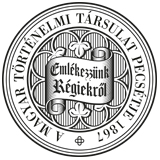Századok – 2010
KÖZLEMÉNYEK - Weisz Boglárka: Vásárok a középkorban
1454 WEISZ BOGLÁRKA from the fair. Another, equally important element was the exemption from the ispán's judicial authority, whereby jurisdiction over the fair was appropriated by its holder. From the 14th century both elements were partly extended, partly modified: a fair could only be held without the detriment of other fairs, that is, of those held in the neighbourhood or in the same county; on the other hand, the free movement of merchants was permitted under the special protection of the ruler. Moreover, all people attending a forum liberum were regarded as "free", which means that nobody could be captured there unless he/she committed the misdeed of which he/she was accused at the fair itself. Annual fairs (forum animale liberum) can be regarded as a special type of the forum liberum. The multitude of people who gathered together for the markets led to the emergence of customs which had nothing to do with trading. Proclamation at the markets was a common procedure already in the Árpád age. The majority of three-market proclamations fell within the same county, but we do find some which concerned two or even three counties. The places of proclamation depended on the person being cited, the location of his lands, and on that of the possession under dispute. All this proves beyond doubt that markets were not only the scene of trading but also an important means in the flow of information. The scene of the market, that is, the marketplace, could assume other functions as well, such as giving room for punishments and executions. These places, alongside their commercial role, thus played a crucial role in the life of medieval people in a more general sense as well, and can be regarded as the real centres of their hosting localities.
